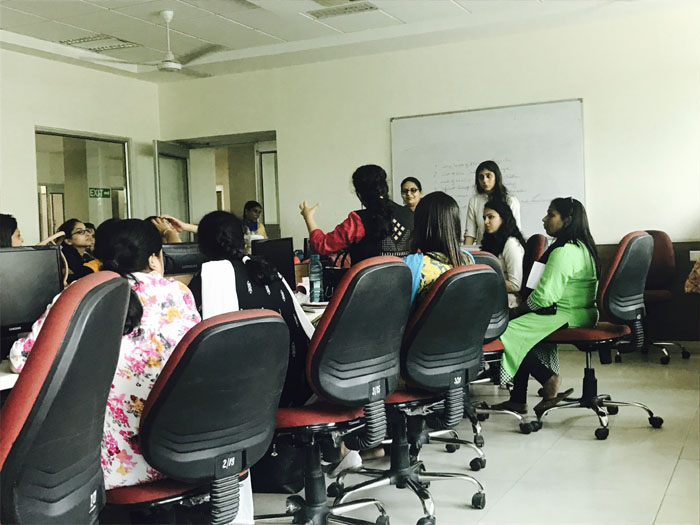Teacher workshop- Design for Change
On 28th July 2017, The Mothers International School organised a workshop for teachers. It was conducted by resource persons from ' Design for Change', which is the largest global movement of Children driving change in their own communities by unleashing their 'I CAN' superpower. Close to 28 educators from different schools participated in the workshop. Ms. Mehak Gumber and Ms. Upasannaa Malik represented our School.
The workshop started with an amusing activity in which teachers by turn, acted like an elephant, rabbit and a monkey! The speakers describes that the aim of their mission is to equip children with the tools required to be aware of the world around them, believe that they play a role in shaping that world and act to build a more desirable, sustainable future.
It offers a simple 4-step design process of Feel-Imagine-Do-Share, which develops the values of empathy, ethics. The instructor explained that they have amalgamated the principles of design and education for engagement and elevation.
[gallery link="file"]
Step 1: Feel The first step to making a change is to try to understand how people feel. One can understand the problem deeply and find out its root cause if one stays close to the person concerned. An activity was conducted to clarify this crucial step. Teachers were made to sit in pairs and without communicating, they had to design a bag for each other within a minute. The second time, they could communicate the specifications of the bag before designing it. Which bag will the user like?? Obviously, the second one!
This activity taught us that children must be encouraged to look at their surroundings closely, observe things that bother them and create a map of their observations.
Step 2: Imagine Teachers must inspire children to imagine and think of out-of-the-box solutions, by building on ideas and using the word and instead of but. The best solution is one which is bold in nature, easy to replicate, long lasting and can impact the maximum number of people.
Step 3: Do In this step, children will put their plan in to action. They must choose roles and responsibilities keeping their strengths in mind.
Step 4: Share Children will share their story with others and inspire other children to say I CAN!
To understand these four important steps, teachers were divided into groups of 4. Each group had to state a problem or an issue that bothered them personally, identify its causes and think of an innovative solution. Problems like traffic jams, long hours of driving, health issues, behaviour of children, etc., were listed by the teachers in the audience.
Teachers were also shown different stories of
students from different schools all over the world. It was inspiring to see how they have made a difference to their surroundings. This strategy will help children not only recognise their own academic achievements but also become socially aware and proactive change- agents in the community..
Ms. Mehak Gumber.













